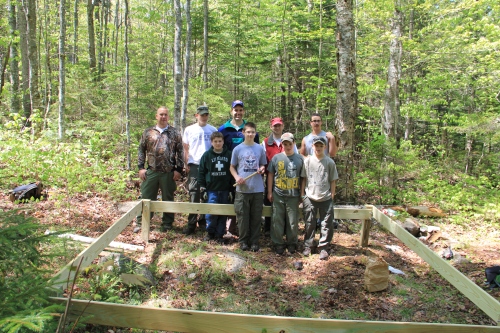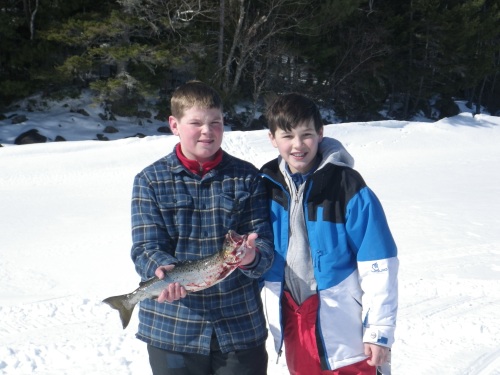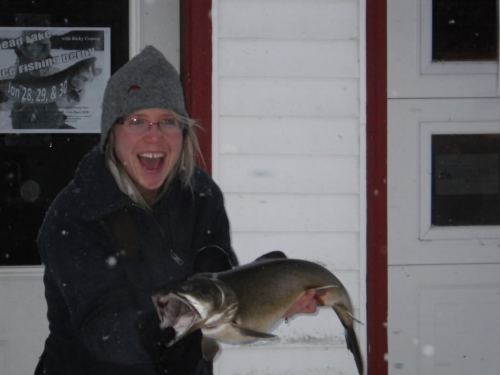Another Project to Improve Access for Anglers
You may recall last winter I wrote a fishing report outlining our collaborative efforts with Elliotsville Plantation Inc (EPI) to improve access to popular fishing holes like Big and Little Benson Ponds in Bowerbank. We received a lot of positive feedback from anglers after they learned they could once again access Big Benson Pond in the winter on their snowsleds using some of the traditional trail routes.
EPI also owns land in the Town of Elliotsville that includes some premier wild and stocked brook trout waters. EPI representatives have been working hard to develop a trail network to these ponds and recently teamed up with the IFW and Boy Scout Troop 61 from the Parkman-Guilford area to build some canoe storage racks along the shore of three of these trout ponds. Some of the scouts hiked in the day before from Shirley and camped overnight. On Sunday, the team went to work using materials purchased by EPI constructing nice new racks on the shores of Little Wilson Pond, Moose Pond, and Prescott Pond. This effort will help keep the area clean and organized while giving anglers the opportunity to once again store their canoes at these remote ponds. While the no motorized vehicle rules are still in place on this parcel, anglers can carry their canoes in and leave them on these new storage racks. EPI simply requests that you label your canoe with your name and phone number so they can keep track of derelict boats in the future. Anglers and hikers can park at the campsites near Little Wilson Falls then hike a little more than a mile into these great trout ponds. This is a terrific opportunity to fish some beautiful trout ponds in a remote setting. We hope anglers will take advantage of it.
Submitted by: Tim Obrey – Regional Fisheries Biologist








